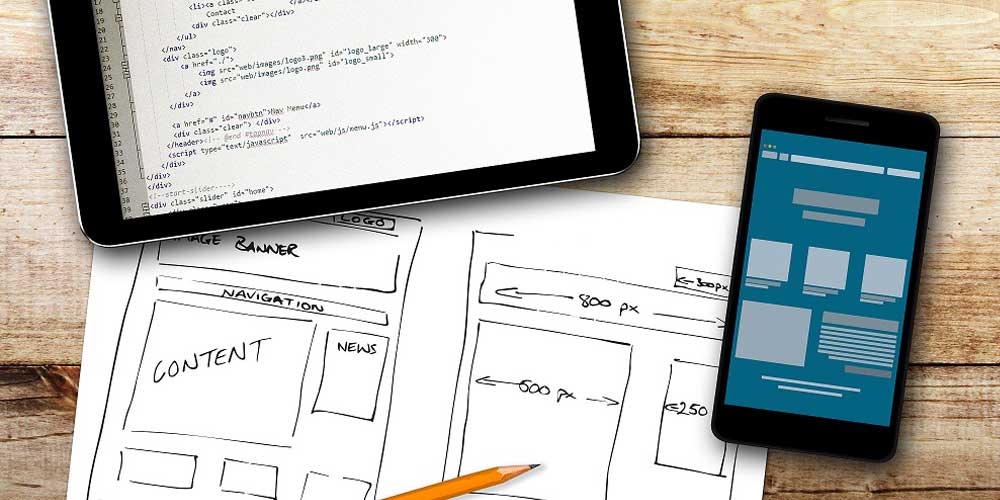Using responsive web design for your website is one of the easiest way to appeal both desktop and mobile users. Responsive design, in essence, is supposed to make your website cross-device capable by giving a seamless experience in all screen sizes. Unfortunately, without proper design, you're only appealing one of them and not both.
The reason for this is because a responsive design is a desktop experience, condensed into a smaller screen. Without having mobile users as a priority when designing your responsive design site, you can have a huge loss in conversion because mobile users are seeing the clutters they don't want (need) to see.
Desktop screens are relatively larger in size. The larger amount of space enables your site to put more elements, such as more columns, bigger banners, larger logo, more items in the navigation and so forth. But on mobile screens, those can add clutters.
Mobile users won't like a responsive design that isn't showing the best things first. If they see distractions or slow loading pages, your website won't appeal them by much, and you won't be able to convert many of them into good leads.
Opting for responsive design should have mobile users as a priority. The reason you're having a responsive design is to target mobile users. Otherwise, why bother having a responsive design in the first place?
So to make your responsive design website appeals mobile users, you need to optimize it to include the basic elements needed for mobile experience before anything else.

Optimize Your Website's Visuals
Images in a responsive design website should be scaled down. However, those images that may look great on a desktop, can be a huge distraction when seen in smaller screens. Although images are scalable, some of them may not be necessary for mobile users to see.
Ask yourself: "Is the image and the visuals effective?", "Is it taking up the entire screen of a phone?", "Could it be a centerpiece that is relevant?"
Desktop-focused visuals such as images and videos can scale well on mobile screens. But having all of them may clutter the overall web design when shown on a smaller screen. This will make users difficult to comprehend what's going on. So here you need to see which visuals should limited to only desktop users, and which could stay on mobile.
Simplify Navigation
Navigation is an important feature that aims to guide users throughout your website. On your desktop version's responsive design, a full width and detailed view of a functional navigation bar can be a great and handy tool. But on mobile, such sophisticated navigation can take up the whole space, blurring out the objective of the page.
Mobile users need a clear navigation bar that is visible and easy to access. Mobile users have smaller screens and they usually wants things fast. They tend to browse quick and won't spend much time in learning what they don't want.
So having a fully-pledged navigation bar, while it's certainly useful for desktop users, won't appeal mobile users.
You may want to have your responsive design website, when viewed on a smaller screen, to feature a more prominent search bar. Or you may want to make your call-to-action button higher up. Using a collapsible navigation that hides when not in use can be also be a good solution.
Putting less distraction on your page by having a clear and easy to use navigation will make your website more easier to use for mobile users.
Eliminate Popups And Overlays
Mobile users are usually on the go, and the last thing they want when visiting your website is seeing needless distractions.
Overlays and popups can be a great feature to give more information up front. But the thing is that, those features are great only on desktop experience. The reason for this is because they won't usually scale down, and will make mobile navigation unbearable. Mobile users that see things in smaller screen, won't appreciate this given experience, and this will kill conversion.
Desktop overlays and popups aren't designed to fit the many combination of screen sizes and resolution. So rather than optimizing those overlays to look great on smaller screens, it would be wise to just eliminate them on mobile.
But if you really need overlays, you need to make them lightweight and non-obstructive. Never let them hover near the navigation bar, for example, and put a clear close button when it can be easily clicked/tapped.
Optimize Text
Image is one thing, the next is text. It doesn't matter if you website have more images or more text-based, you still need to see how your text looks on smaller screens. This is obvious because text is the only thing that speaks your words, and by having them unable to scale or look good on smaller screens, will make your page overcrowded and confusing.
The best practice is to keep your content's text as a Sans Serif, and make them as brief as possible.
You may want to rewrite some text-based information on your site's pages so their arrangement and format show only the most important information for mobile visitors. You may keep the longer versions available for desktop users if you wish.
The main idea here is to make your text short and concise so it catches the eye and is valuable to the reader.
By putting text as one of your focus, you can eliminate the chance that your text completely hides the page, or the circumstance that your call-to-action button may be pushed to below the fold, making your responsive design a fail.
Pay Attention To Scripts
Your website's design and its interactive appearance are made possible using many technologies. For desktop users, having all of them running by default may not bother them much. But mobile users that are usually on mobile data and on the go, their smaller screen can make those goodies a fail to them.
Besides that, having more scripts running can put more load to your web page because they'll increase page size and HTTP requests.
Furthermore, some mobile browsers that are great in adjusting web pages to appear well on smaller screens, won't run those scripts as they are intended. This will make the appeal to be eliminated, and can even destroy the overall web design.
Some mobile browsers even ditch JavaScript files for the purpose of speed so you want to have a fallback to counter this issue.

Conclusion
Desktop computers are still irreplaceable, and their presence is still having a special place in its users' heart. But the growing mobile universe is eating its pie quickly and steadily. This fact makes the internet a place where more mobile users are connected.
Websites that are the places where visitors will visit, should be friendly-enough for them to use. Otherwise, conversion won't suffice.
By having a responsive web design to prioritize mobile users, you're appealing mobile users as much as desktop users. Desktop users can forgive a little clutter on your website, but mobile users' tend to hate any clutter they see whatsoever.